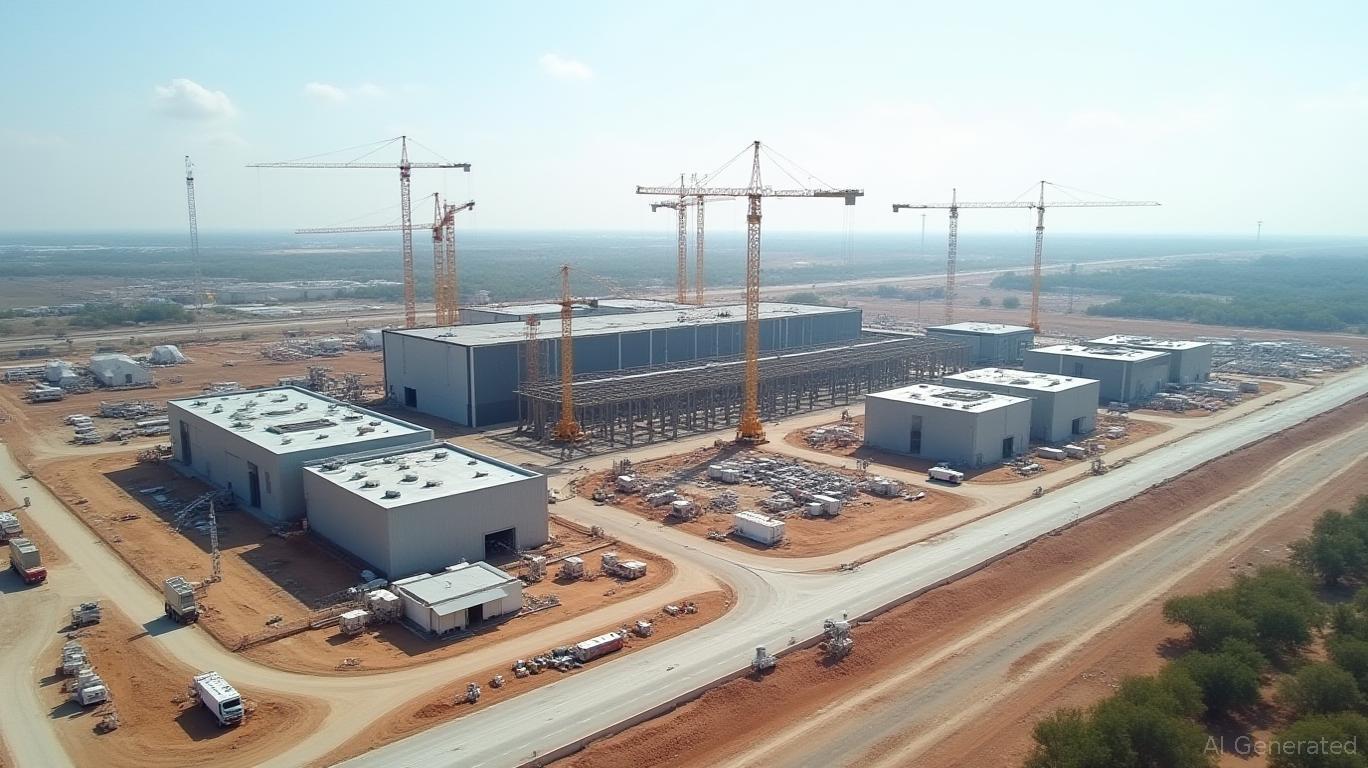Foundational Fortunes vs. Silicon Speculation: Why Texas Instruments Outshines Meta in the $60 Billion Tech Gamble
In a fragmented tech landscape defined by geopolitical tensions and shifting demand patterns, two $60 billion bets—one on semiconductor manufacturing by Texas Instruments (TI), the other on AI infrastructure by Meta—highlight divergent strategies for capital allocation. While both companies seek to capitalize on future growth, TI's investment in analog chip production and domestic manufacturing presents a safer, higher-yield opportunity compared to Meta's speculative AI spending, which faces regulatory, competitive, and technical headwinds. This article dissects the long-term industrial value of each approach, arguing that TI's focus on semiconductor resilience offers a more durable play for investors.
Texas Instruments: Anchoring Semiconductor Resilience
TI's $60 billion investment is a masterclass in strategic capital allocation, targeting the foundational layers of the global tech economy. By building seven new 300mm wafer fabs across Texas and Utah—including the $40 billion Sherman mega-site—TI is securing its position as the U.S.'s preeminent analog and embedded processing chip producer. These chips are indispensable to industries from automotive (Ford) to aerospace (SpaceX) and consumer electronics (Apple), with demand driven by secular trends like electric vehicle adoption, AI-driven data centers, and IoT proliferation.
The investment's geopolitical tailwinds cannot be overstated. TI's alignment with the CHIPS and Science Act—a U.S. government initiative to subsidize domestic semiconductor production—ensures access to tax breaks and federal funding. This creates a virtuous cycle: onshore manufacturing reduces supply chain fragility, attracts partnerships with defense and tech giants (e.g., the Defense Llama project with the Department of Defense), and locks in long-term contracts. 
The durability of TI's demand is underscored by its 90%+ gross margins and recurring revenue streams from industrial and automotive clients. Unlike AI, which relies on unpredictable software breakthroughs, analog chips are a “must-have” component in nearly every electronic system, insulating TI from fads and market fragmentation.
Meta's AI Gamble: Overcapitalizing on Unproven Models
Meta's $60–65 billion AI spend, meanwhile, reflects a high-risk, high-reward strategy aimed at countering rivals like OpenAI and Amazon. The focus on GPUs, custom chips, and partnerships with NVIDIA and Scale AI seeks to accelerate training of large language models (LLMs) and automate processes like content moderation. However, this approach carries significant pitfalls:
- Over-Reliance on Automation: Meta's shift to AI-driven risk assessments for new features—reducing human oversight—risks compromising safety and compliance. Former employees warn of “higher risks” from automated systems failing to detect privacy violations or misinformation.
- Competitive Crowding: The AI race is a zero-sum game. While Meta's Llama series claims 1 billion monthly users, its delayed “Behemoth” model and underwhelming Llama 4 performance highlight execution risks. Competitors like Microsoft (with OpenAI) and Google (Gemini) are outpacing Meta in model innovation and adoption.
- Regulatory Scrutiny: The FTC's ongoing antitrust case and EU Digital Services Act impose compliance costs on Meta's AI ambitions. Any misstep in data handling or bias mitigation could trigger fines or operational restrictions.
The financial risks are stark. Meta's 2025 spending—up to $65 billion—could strain margins if returns lag. Unlike TI's asset-heavy model, which generates predictable cash flows, AI infrastructure is a bet on unproven software architectures and user adoption. The Scale AI investment, while strategic, signals Meta's desperation to catch up, as its 49% equity stake in a startup valued at $29 billion may prove costly if Scale's data labeling services fail to deliver outsized ROI.
Why TI Wins the Capital Allocation Battle
- Demand Durability: Semiconductors are a foundational layer with secular growth drivers (e.g., EVs require 5x more chips than internal combustion engines). TI's analog chips have no substitutes in precision electronics, ensuring consistent demand.
- Geopolitical Shelter: Onshore manufacturing aligns with U.S. industrial policy, shielding TI from trade wars and supply chain disruptions.
- Risk Mitigation: TI's balance sheet—$6 billion in cash, 3.7% dividend yield—offers downside protection. Meta, by contrast, faces existential risks from AI's winner-takes-all dynamics.
Investment Takeaway: TI is a high-yield, low-risk play on tech's infrastructure, ideal for investors seeking steady returns. Meta's speculative AI bet is better suited to growth-focused portfolios with a high risk tolerance.
Conclusion: Bet on the Bedrock, Not the Bluff
In a fragmented tech landscape, TI's semiconductor resilience and geopolitical tailwinds position it as a safer, higher-yield investment than Meta's AI gamble. While Meta's vision is bold, its execution risks—technical, regulatory, and competitive—far outweigh TI's tangible advantages in demand durability and industrial strategy. For conservative investors, TI's analog chips are the bedrock of the digital economy; for Meta, the $60 billion bet is a high-stakes bluff in a crowded poker game.

Comments
No comments yet